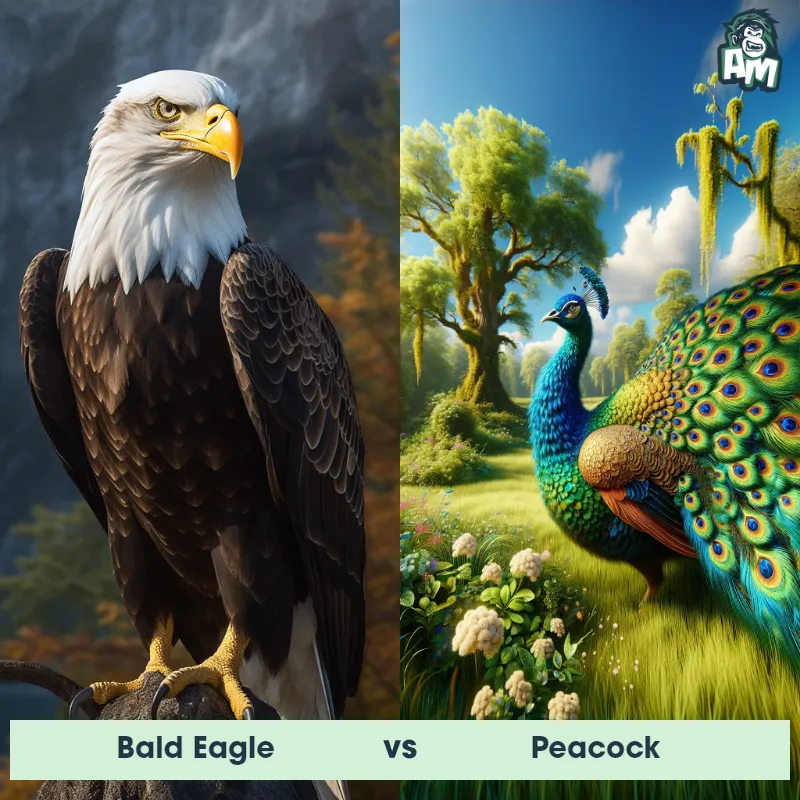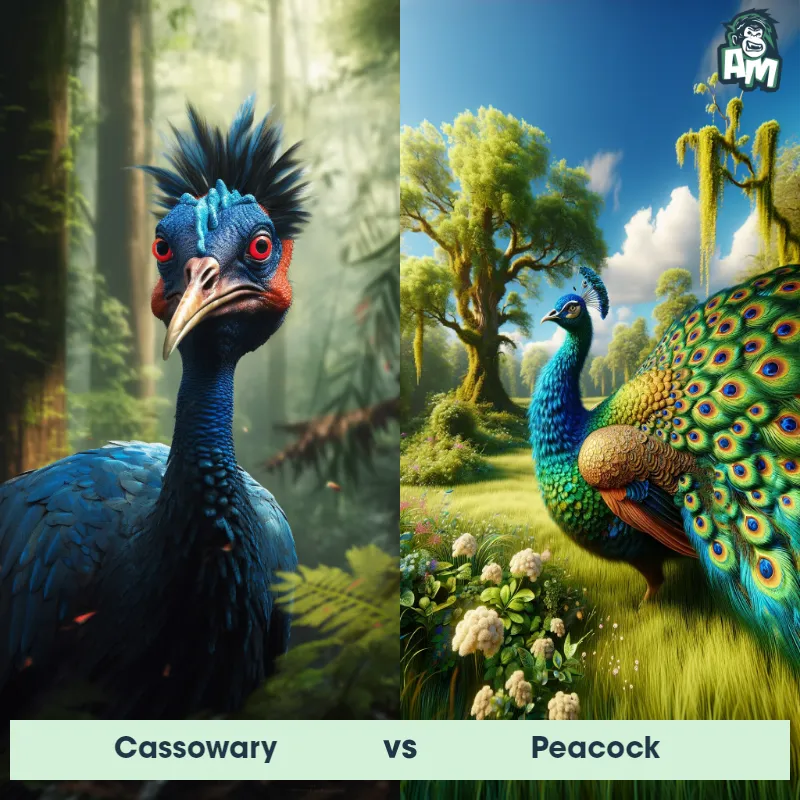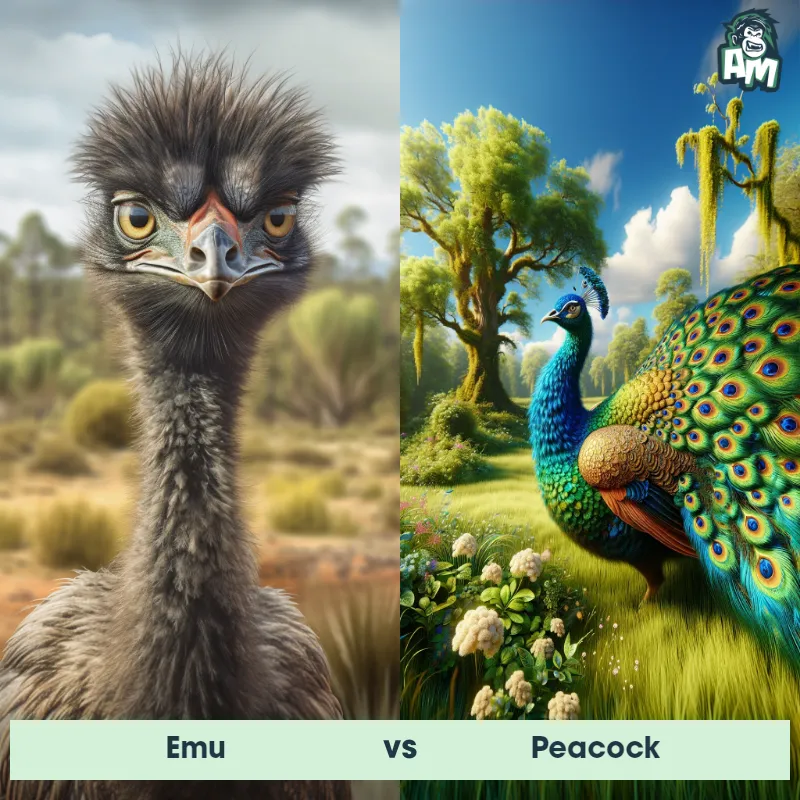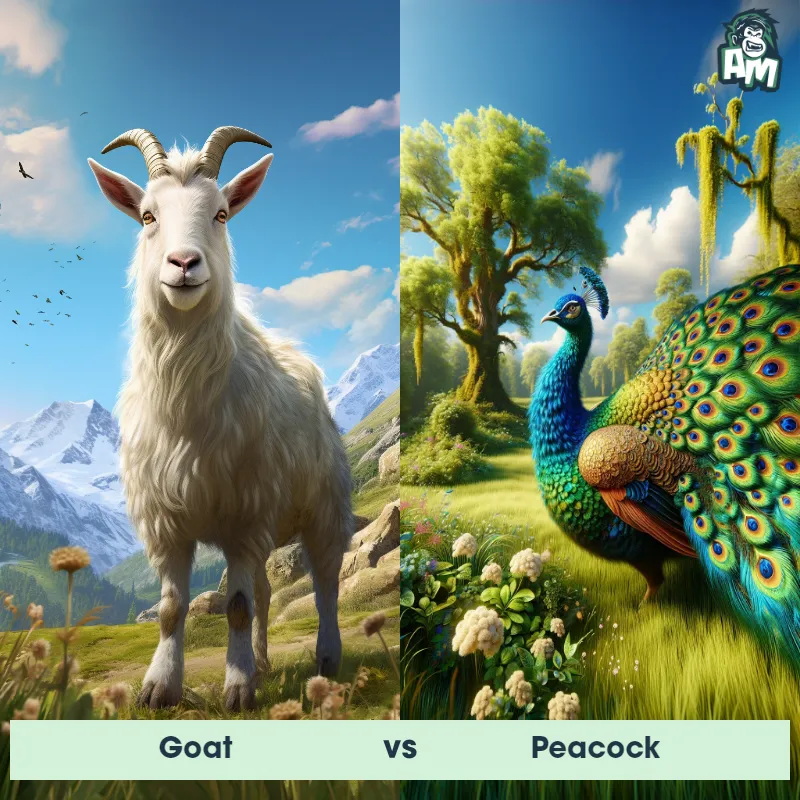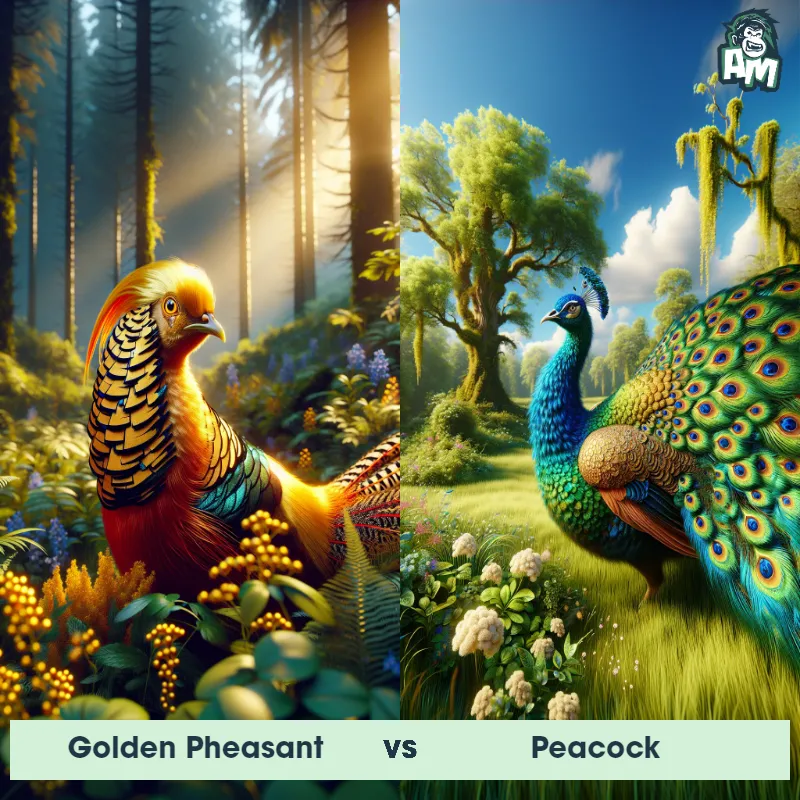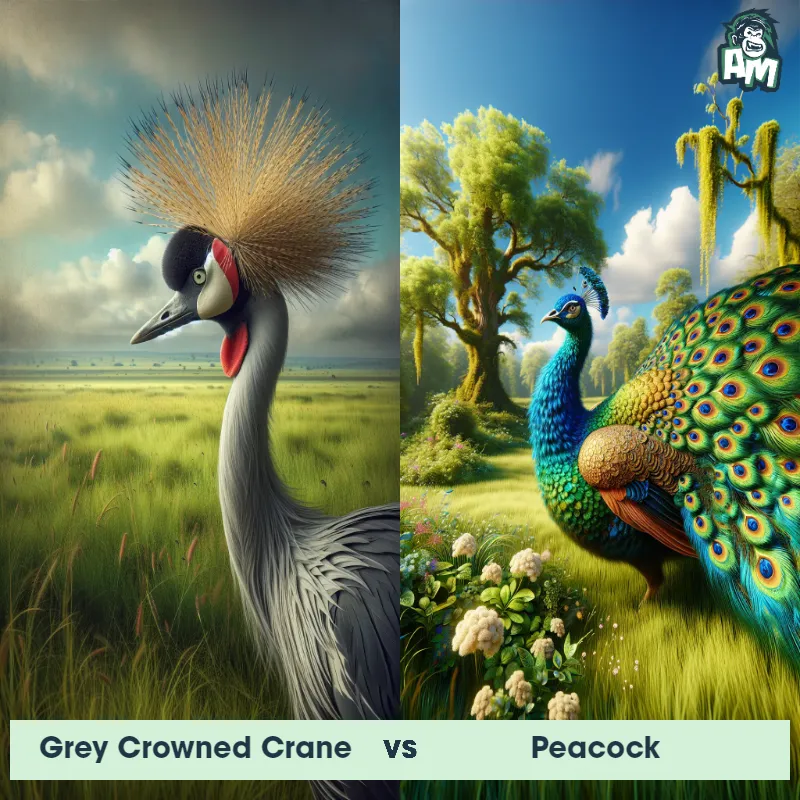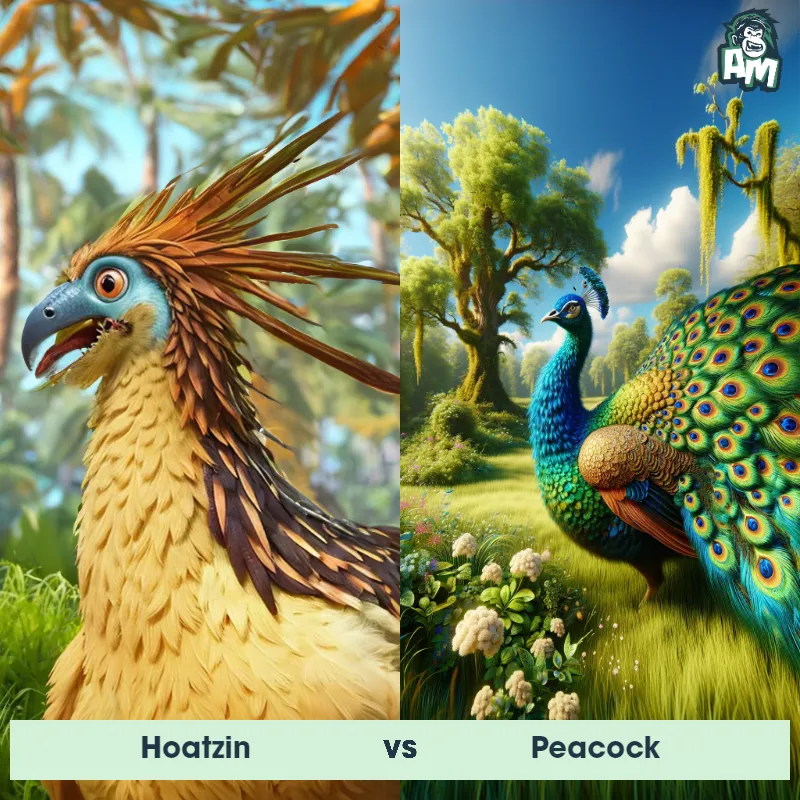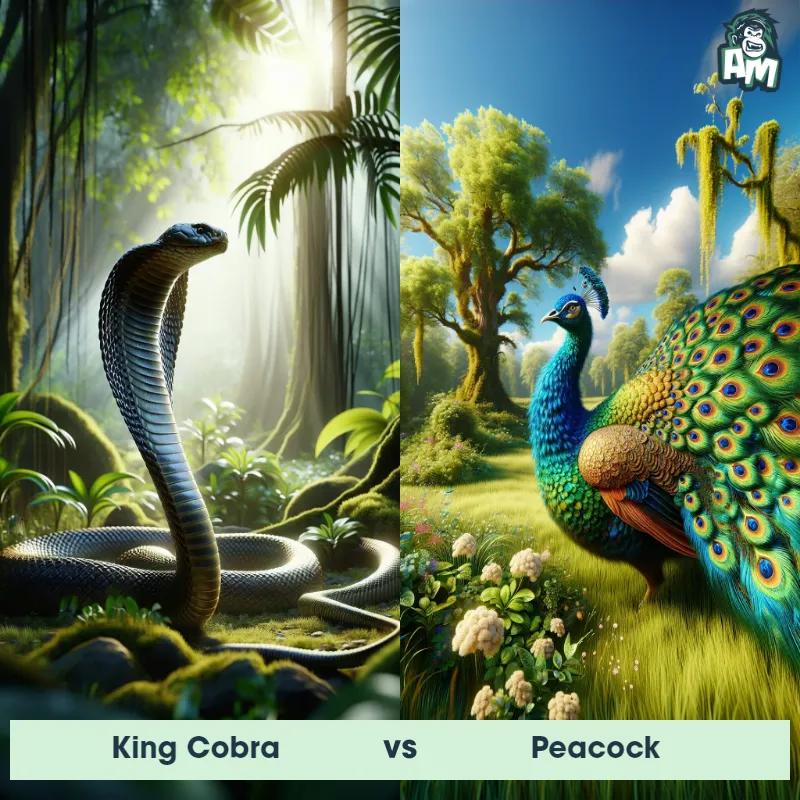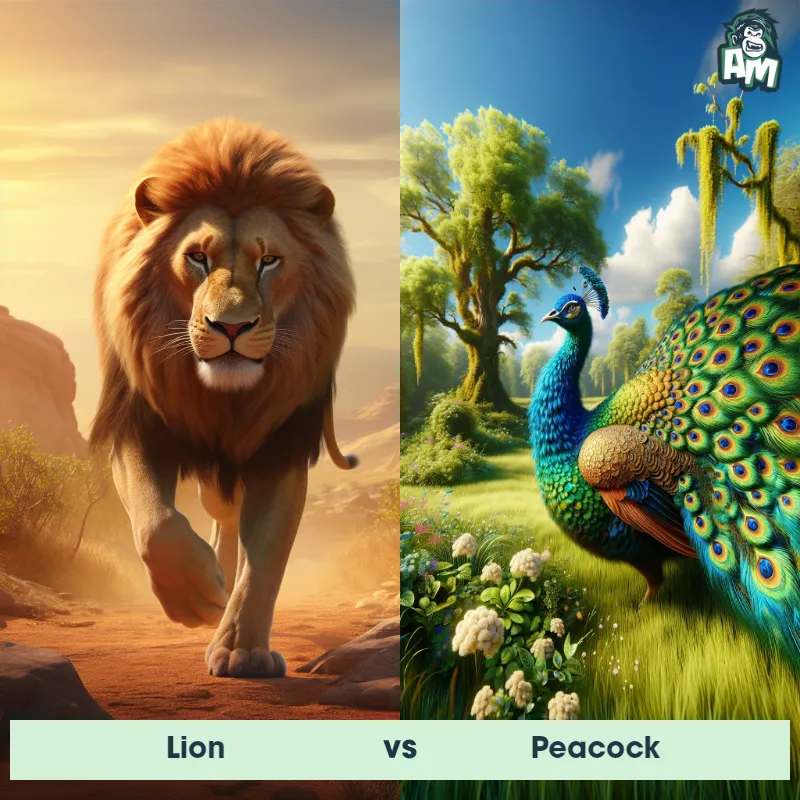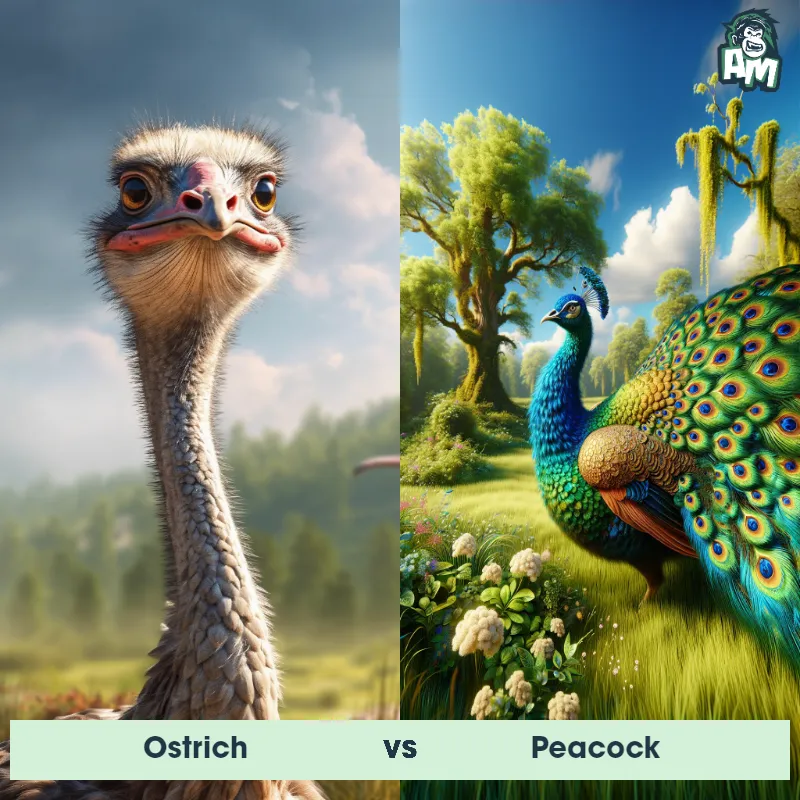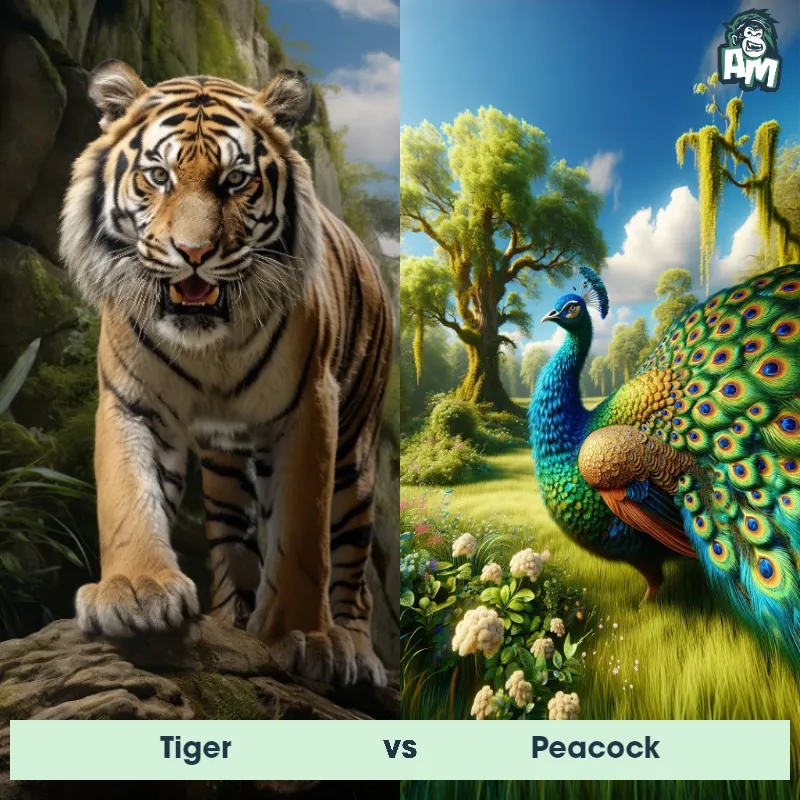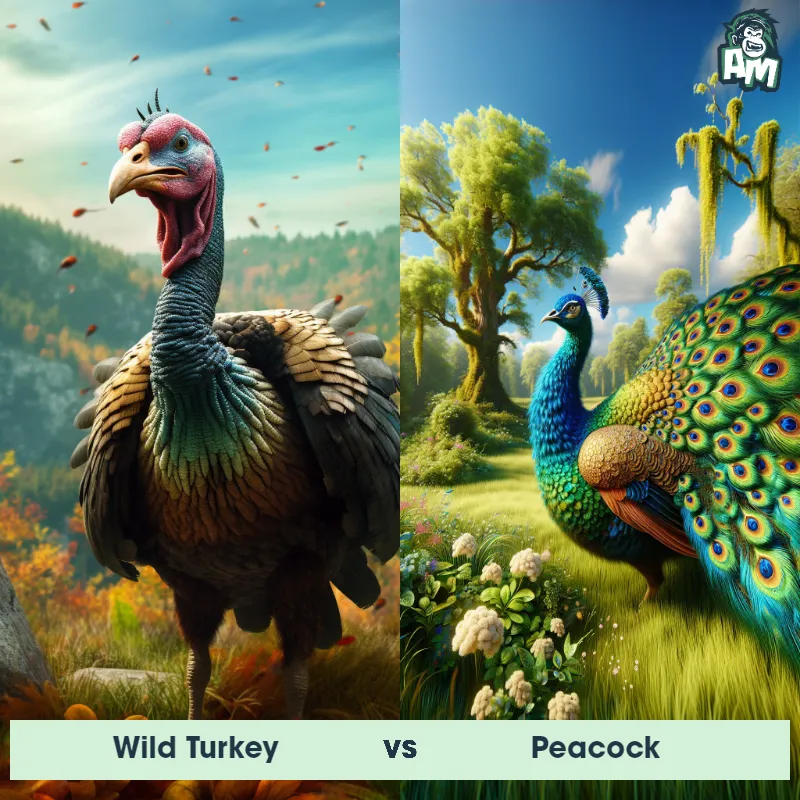The Peacock
The peacock, a large and majestic bird, is known for its vibrant plumage and graceful strut. The male peacock, also called a peafowl, is characterized by its stunning long tail feathers, which display iridescent shades of blue, green, and gold. These feathers, adorned with intricate eye-like patterns, are spread out in a magnificent fan-like display during courtship rituals. The female peacock, or peahen, possesses a less elaborate appearance, with duller feathers of brown and gray. Peacocks inhabit wooded areas and grasslands, and they are omnivorous, feeding on fruits, seeds, insects, and small reptiles.
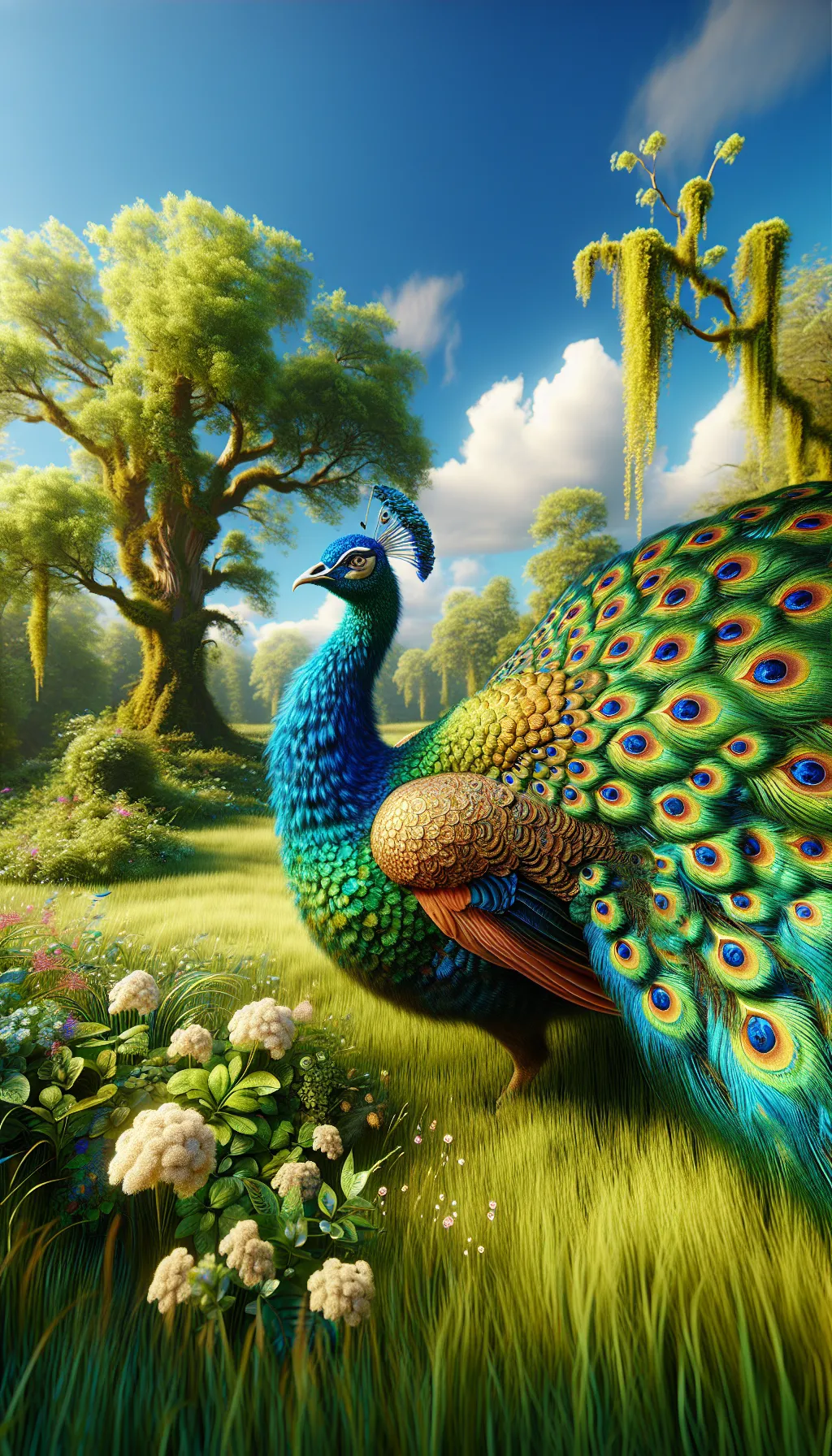
| Peacock | |
|---|---|
| Size | 3-4 feet (0.9-1.2 meters) |
| Weight | 8-13 pounds (3.6-5.9 kilograms) |
| Speed | 10mph (16km/h) |
| Key Strength | Strong beak and talons for defense |
| Biggest Weakness | Heavy and cumbersome tail feathers limit agility |
| Scientific Name | Pavo cristatus |
| Family | Phasianidae |
| Habitat | Forested areas, open grasslands, and cultivated areas. |
| Geography | South Asia, specifically India and Sri Lanka |
| Diet | Omnivorous: seeds, fruits, insects, reptiles, and small mammals. |
| Lifespan | 15 years - 20 years |

The Peacock
The peacock, a large and majestic bird, is known for its vibrant plumage and graceful strut. The male peacock, also called a peafowl, is characterized by its stunning long tail feathers, which display iridescent shades of blue, green, and gold. These feathers, adorned with intricate eye-like patterns, are spread out in a magnificent fan-like display during courtship rituals. The female peacock, or peahen, possesses a less elaborate appearance, with duller feathers of brown and gray. Peacocks inhabit wooded areas and grasslands, and they are omnivorous, feeding on fruits, seeds, insects, and small reptiles.
Fun Fact: Despite their exquisite beauty, peacocks are not great fliers and their large tail feathers actually hinder their ability to fly long distances.
| Peacock | |
|---|---|
| Size | 3-4 feet (0.9-1.2 meters) |
| Weight | 8-13 pounds (3.6-5.9 kilograms) |
| Speed | 10mph (16km/h) |
| Key Strength | Strong beak and talons for defense |
| Biggest Weakness | Heavy and cumbersome tail feathers limit agility |
| Scientific Name | Pavo cristatus |
| Family | Phasianidae |
| Habitat | Forested areas, open grasslands, and cultivated areas. |
| Geography | South Asia, specifically India and Sri Lanka |
| Diet | Omnivorous: seeds, fruits, insects, reptiles, and small mammals. |
| Lifespan | 15 years - 20 years |
Peacock Matchups
We use AI to simulate matchups between the Peacock and other animals. Our simulation considers size, strength, and natural predatory behaviors to determine the most likely outcome.

Can't find the Matchup you want?
Create Your Own MatchupPeacock: Diet, Predators, Aggression, and Defensive Behaviors
What do Peacocks eat?
Peacocks are omnivores and their diet consists of a variety of foods including insects, plants, fruits, small mammals, snakes, and even small reptiles. They are opportunistic feeders and will forage for food both on the ground and in trees.
Do Peacocks have any predators?
Yes, Peacocks have several predators in the wild including large cats such as tigers and leopards, as well as wild dogs, eagles, and snakes. Younger Peacocks are especially vulnerable to predators due to their smaller size and lack of experience in defending themselves.
Are Peacocks aggressive?
Male Peacocks, also known as peafowls, can be territorial and aggressive during the breeding season. They may display aggressive behavior towards other males in order to establish dominance and attract females. Female Peacocks, on the other hand, are generally more docile and peaceful.
Do Peacocks fight?
During the breeding season, male Peacocks may engage in physical fights with each other in order to establish dominance and win the attention of females. These fights typically involve loud screeches, raised tail feathers, and attempts to peck or strike each other with their talons.
How do Peacocks defend themselves?
Peacocks have several defense mechanisms to protect themselves from predators and rivals. One of their most effective defenses is their ability to fly relatively short distances to escape danger. Additionally, they can use their sharp talons and beak to defend themselves if necessary, and their vibrant plumage can be used to startle or intimidate potential threats.
What is the biggest weakness of Peacocks in a fight?
The biggest weakness of Peacocks in a fight is their relatively large and colorful tail feathers. While these feathers are attractive to females and help establish dominance, they can also weigh the bird down and make it more vulnerable to attacks from predators or rivals. In a fight, a Peacock may have difficulty maneuvering and defending itself effectively due to the weight and size of its elaborate tail feathers.
Fun Fact: One interesting fact about peacocks is that their vibrant plumage is not due to pigments, but rather to the structure of the feathers that scatter and reflect light, creating the vibrant colors.
Fun Fact: Another fascinating fact about peacocks is that their distinctive calls, often heard during the breeding season, can reach up to 120 decibels, making them one of the loudest bird species in the world.



